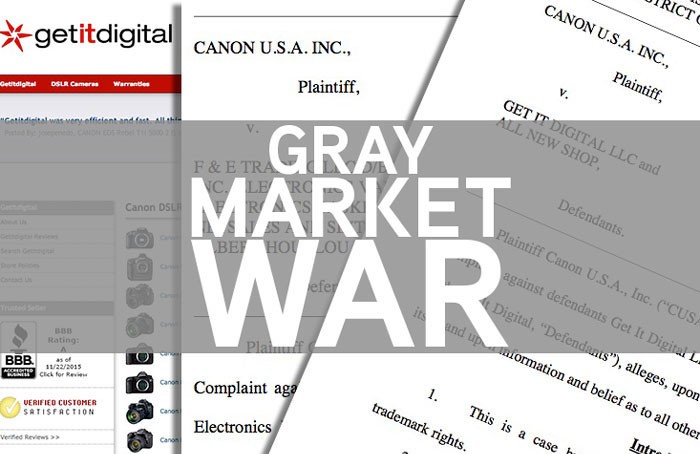
In the ongoing saga of Canon versus gray market retailers, F & E Trading, LLC (allegedly aka Big Value, Inc., Electronics Valley and others) has filed an Answer to Canon’s Amended Complaint, which we reviewed last month.
Things get a little procedurally weird in F & E Trading, LLC’s Answer in the first paragraph, which ends with a footnote. In the footnote, F & E Trading, LLC essentially says that the NY and NJ F&E companies are entirely different and, in this case, F & E Trading, LLC is only responding to the complaint for the NY company.
“The Complaint defines “F&E” to encompass both F&E NY and F&E New Jersey. F&E NY’s Answer is only with respect to F&E NY. F&E NY denies knowledge or information sufficient to form a belief as to the truth of any allegations as to F&E New Jersey or Albert Houllou.”
So, Canon may have missed the mark on serving the wrong company or, perhaps, it just has not been able to serve the right company and Albert Houllou yet, who was a key target it Canon’s Amended complaint. Until the corporate structure of the defendants is sorted out more clearly, this could be sloppy to keep track of – or it could simply be some procedural gamesmanship. We’ll know more over the next couple months.
Back to the response though.
The crux of F & E Trading, LLC’s response to Canon are in line with what we have already seen from Get It Digital’s Answer. As noted, there are a couple of procedural wrinkles that are difference but it boils down to the same key affirmative defenses as Get It Digital asserted:
- First Sale Doctrine
- Laches
- Waiver and Estoppel
If you are interested in reading more about these defenses and how they affect this case, then please read my prior breakdown of Get It Digital’s Answer.
You can read the full Answer from F & E Trading, LLC below in the embedded Scribd document. You’ll note that F & E Trading is a little less verbose in its responses and doesn’t get into the meat of the law on its affirmative defenses. This is more of a stylistic thing and doesn’t really signal any different defenses (if this is, in fact, the right company).
Also, F & E Trading lists two other “affirmative defenses” that really aren’t affirmative defenses. The Complaint’s failure to state a claim upon which relief can be granted (see paragraph 74) is usually presented in a separate motion but appears to be inserted here to keep with the kitchen sink approach. There is no law backing this up in F & E Trading’s Answer, which usually is provided in the separate motion to dismiss under Rule 12(b)(6). And if this company is not involved with the alleged wrongdoer, I’m not sure why it didn’t file a motion to dismiss before filing its Answer.
Paragraph 75 alleges that F&E NY has not done business since 2010 and therefore can’t be held liable for the alleged wrongdoings. Again, this is not an affirmative defense but gives us some insight to the footnote on the first page of the Answer. An affirmative defense allows the defendant (aka the accused) to negate liability even if they committed the alleged wrongdoing. What F & E is really offering here is a fact, which goes to Canon’s burden of proof to make its case.
We don’t have a ton of new insights on the meat of this case that we already didn’t see with Get It Digital’s Answer. Because the facts and allegations in both cases are so similar, I suspect this will be a trend we see over the course of these cases.
When something interesting happens, I’ll be sure to follow up. Stay tuned.
Copyright/DMCA Notice: The RSS entry was originally published on Photography Bay. RSSID#794326